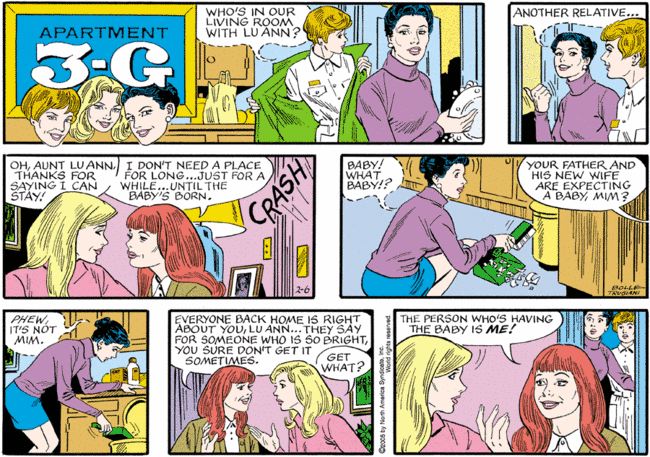It’s the floating heads, I tell you! They’ve hypnotized me!
Post Content
Apartment 3-G, 2/6/05

I know, I know, I know, Apartment 3-G isn’t even really that interesting right now, and yet I just can’t look away. It’s a disorder, I freely admit. Fun observations about this installment:
- Margo really likes hanging around the apartment in very short skirts. By which I mean: somebody really likes drawing Margo hanging around the apartment in very short skirts.
- Bottom row, middle panel: Mim needs to be nice so as to stay out of the homeless shelter, but I’m guessing that what they actually say at home doesn’t include the “someone who is so bright” bit.
- Last panel: I love the look on Margo’s face. You’d think Mim had just said, “The person who’s having the baby is me … and in fact, I’m having it right now! Say, do you think Margo will mind if I put the afterbirth in her purse?”
Meanwhile, the fact that Tommie wears that crazy fetishistic uniform makes me all the more resent her marginal role in the strip.




